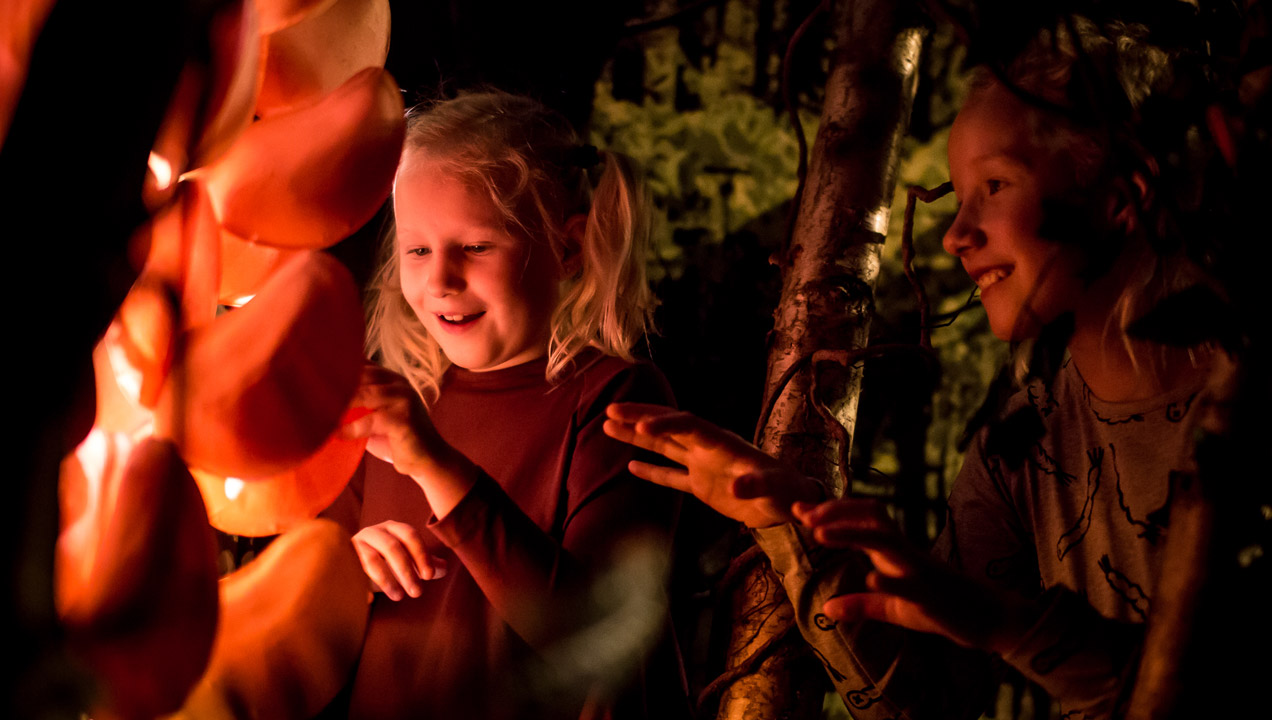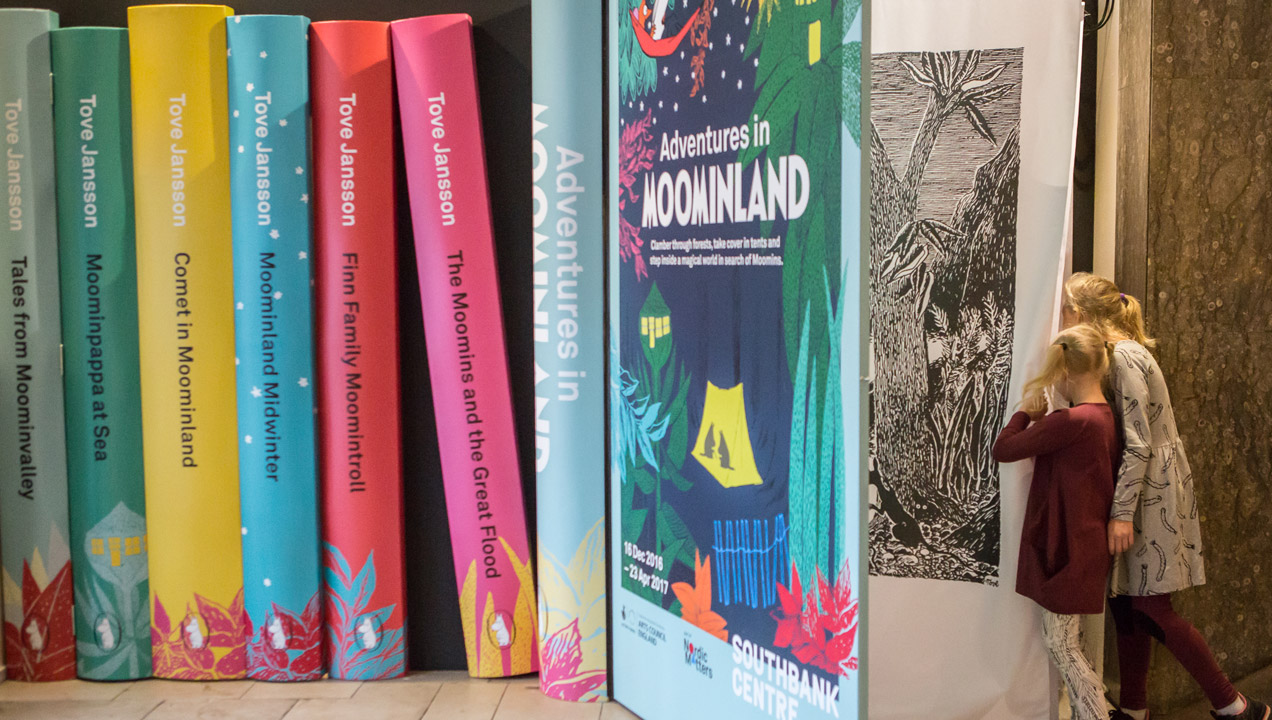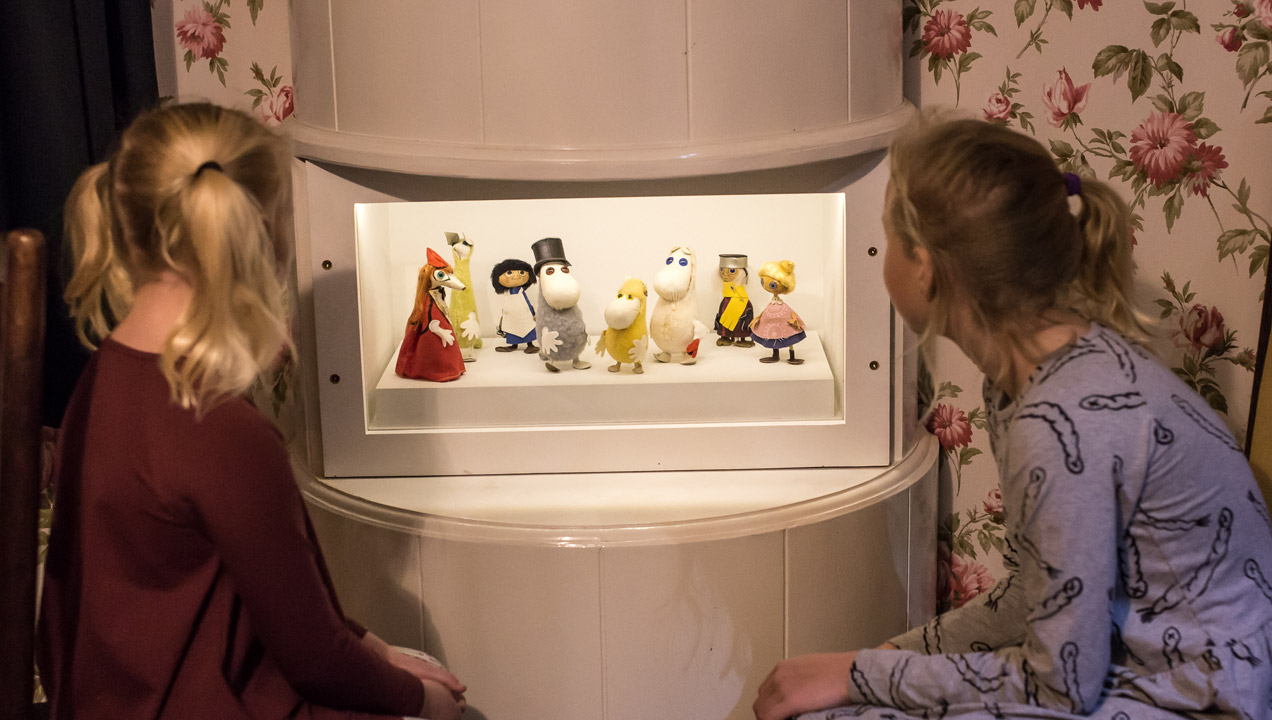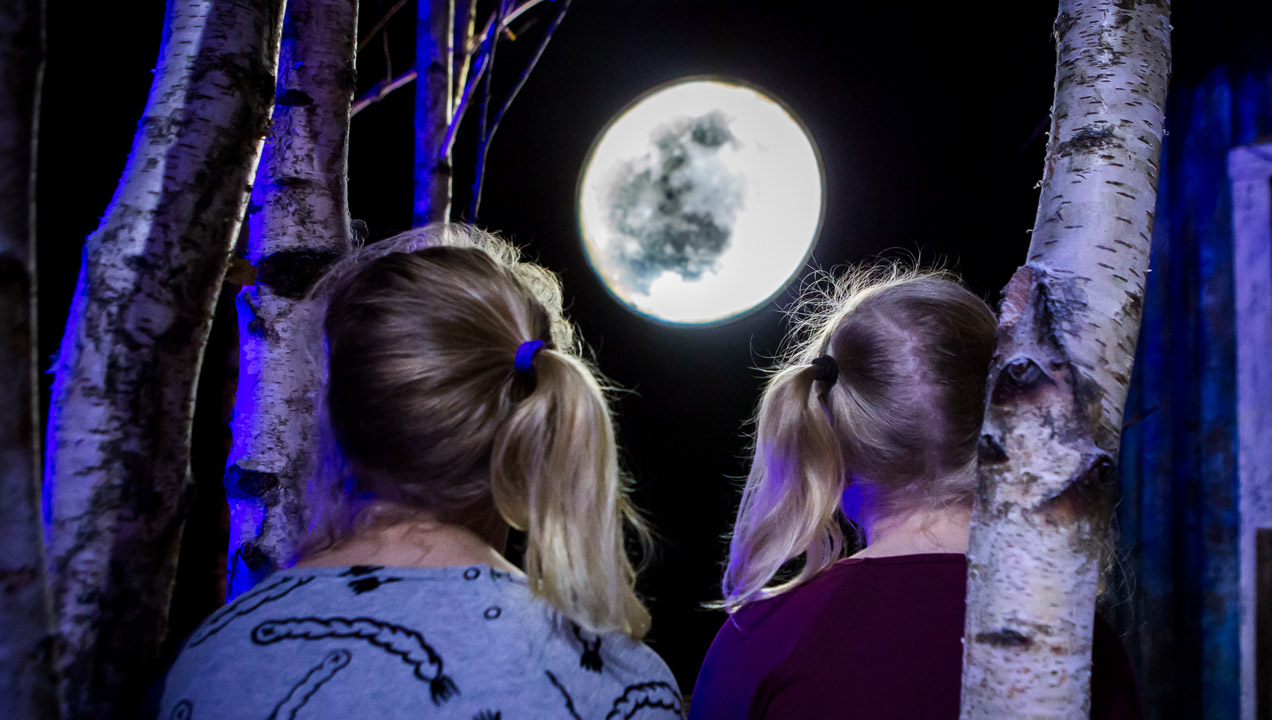What the Moomins can teach us about Exhibition Design
Imagine being greeted by a storyteller who guides you through a campsite, a tropical jungle and a cave. You walk across the sand, amongst the tropical vines hearing stories about the real life events that inspired The Moomins. You are told to climb into a boat and sail across the sea to visit Tove Jansson’s island cottage where you are asked to join a picnic. At the end of your whimsical journey you feel entertained, engaged, and educated, what every exhibition aims to be.
I recently visited the Moomin Exhibition at the Southbank Centre with friends and really enjoyed their immersive experiential exhibition about author Tove Jansson’s life told through Moomin story themed sets. The exhibition went beyond the usual museum exhibition experience by using the artefacts to create an engaging narrative that people could interact with.

Vic Frankowsk ©
So, as designers, what can we learn from the design of this exhibition? We were very lucky and managed to get Paul Denton, Producer of the exhibition at the Southbank Centre to talk about the design process behind the exhibition.
Sutherland Labs (SL): What made you design the exhibition in this way (more experiential rather than the usual display curation)?
Paul Denton (PD): By incorporating original archive material (drawings, letters and personal objects) in this bold and innovative display, we allow audiences to engage with the stories and the author’s work in a far more unique and meaningful way.
Unlike other more traditional exhibitions Adventures in Moominland does not contain any text panels or labels, instead visitors are invited into an immersive world guided by a trained host (not actor) and overarching audio narrative. By being fully involved (sight, sound and smell), visitors have a much more visceral experience with the original archive material than they may have – uncovering new stories along the way.

Vic Frankowsk ©
SL: This is a new strand of work for the Southbank Centre and follows the previous success of Wondercrump of Roald Dahl earlier in the year.
How long did it take to produce?
PD:The exhibition took around 8 months from conception to opening, which involved working closely with Tampere Art Museum, and Moomin Characters in Finland, who hold the original archival works which we have generously been allowed to exhibit with the show.
SL: How did you come up with the narrative of the exhibition?
PD: The narrative very much started with the Moomins creator Tove Jansson, an artist, a painter and pioneer who wrote the stories and created all the Moomins illustrations.
SL:How and why did she begin to create these strange creatures? How did family, friends and lovers inform each of the characters? and how did the rich Nordic landscape inspire the worlds she created for the Moomins to inhabit? All the while against the backdrop of extreme socio political change in Finland in the 1930’s and 1940’s.
PD: Because the Moomins is so wildly known to different people in different ways, from TV animation to merchandise, we were focused on bringing the narrative here back to original books themselves. Each section of the exhibition is referencing a particular book and story.

Vic Frankowsk ©
SL: Can you briefly talk about the design process? From the idea stage to the execution?
PD: The exhibition was conceived and designed (in house) by Southbank Centre, who designed and created the exhibition narrative – this included the look and feel for each ‘section’ and the curation of the original archive material. We then work closely with external designer/ fabricators in a collaborative way to physically bring the narrative to life in 3D.
Southbank Centre also commissioned and developed the script, musical score and new works, which included the animation and film.
SL: Any tips on creating a good exhibition experience?
PD: Start with the content! What items, works, letters and objects tell the story. How does each one aid understanding and connect the visitor to the work and the narrative that is being communicated.
Be bold and never limit your ideas – “and you emerge into the archipelago at dusk” – there is always a way to make even the impossible happen!

Vic Frankowsk ©
In summary, the Moomin Exhibition is a prime example of good design by maintaining a focus on experience and storytelling.
As is so often the case when we’re designing services or products, this exhibition has benefitted from a focus on the end-user’s experience, rather than the costs or management of the service. At the heart of it, it is the person’s experience of the exhibition and how their needs can best be met. It has to engage people on an intellectual, emotional and physical level for it to be a richer experience. In the case of an exhibition it’s designing an experience that gives visitors the opportunity to learn something new, be entertained and have fun. Rather than reading lots of panels, people join in an immersive experience through trained storytellers and become part of the exhibition narrative itself.
Having a participatory, story-led experience means that visitors are properly engaging with the exhibition on offer, which makes it a more memorable experience. The exhibition has been selectively developed and designed to incorporate much more of the senses, sight, auditory and touch that creates such a successful and visceral experience for the visitors, something we as designers we should learn from.
The Moomin Exhibition will be on until the 20th August 2017 at the Southbank Centre.
